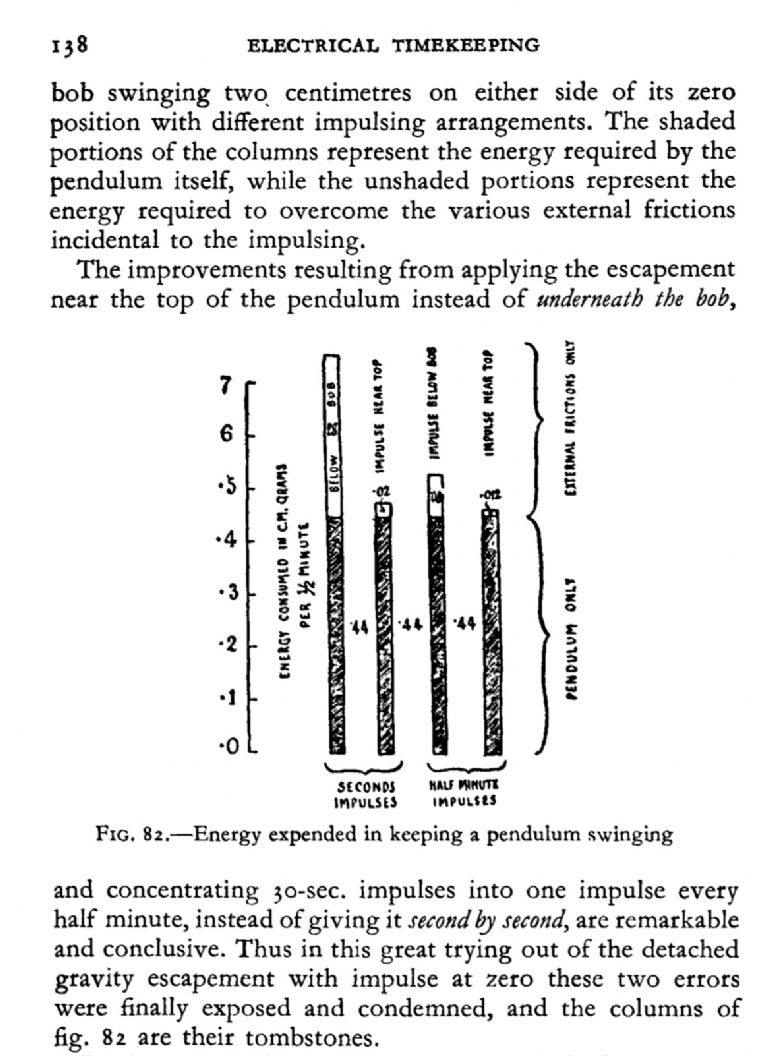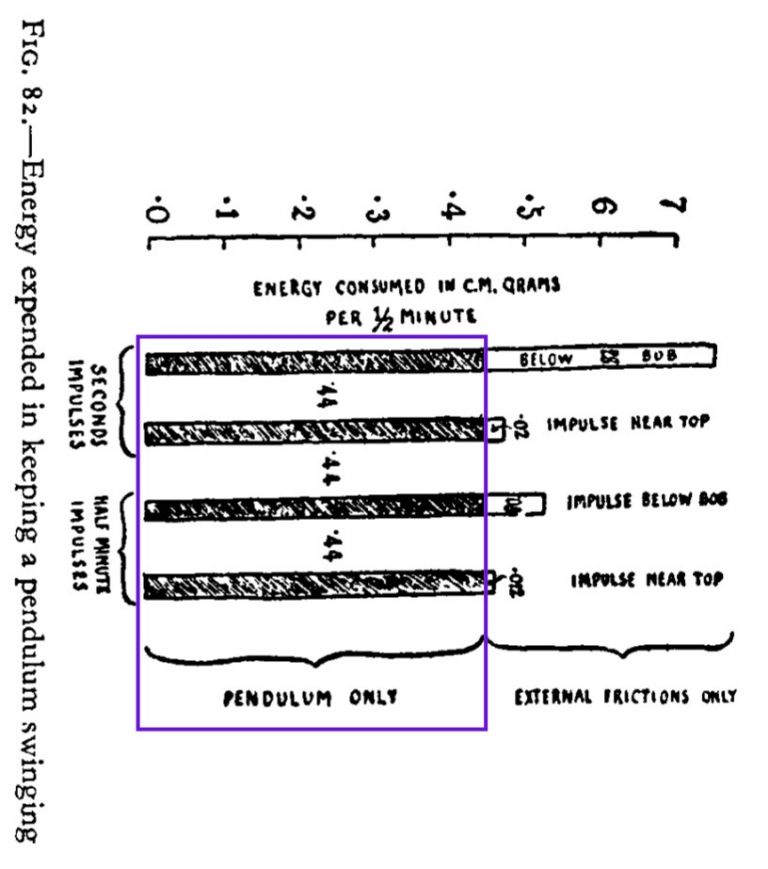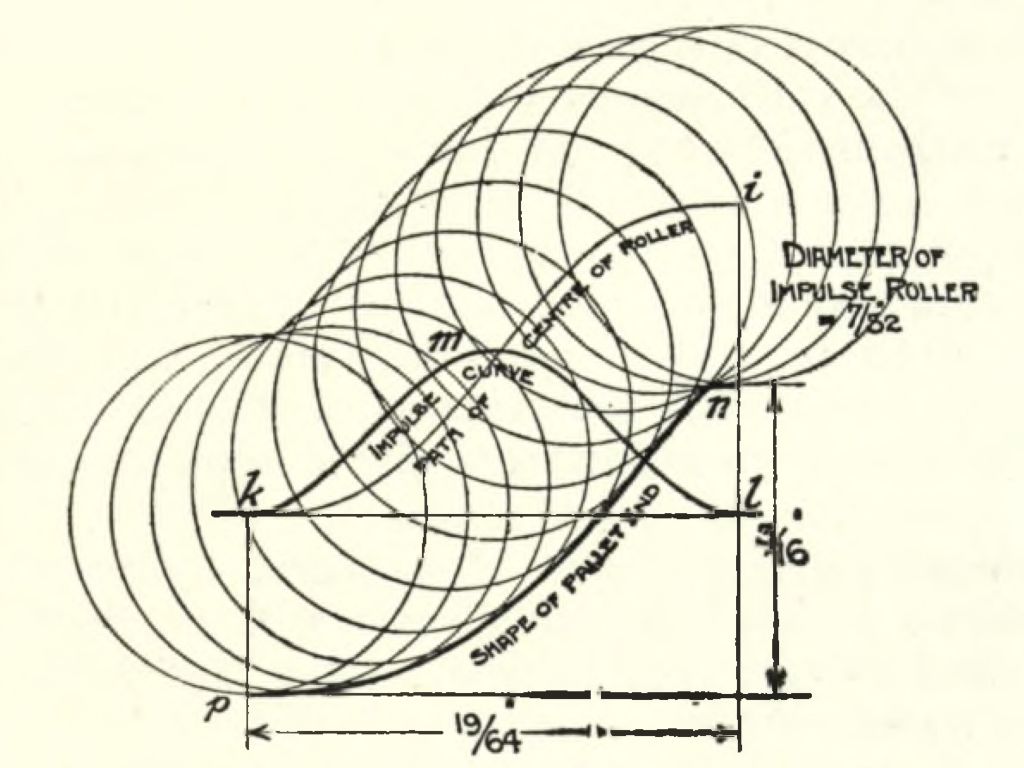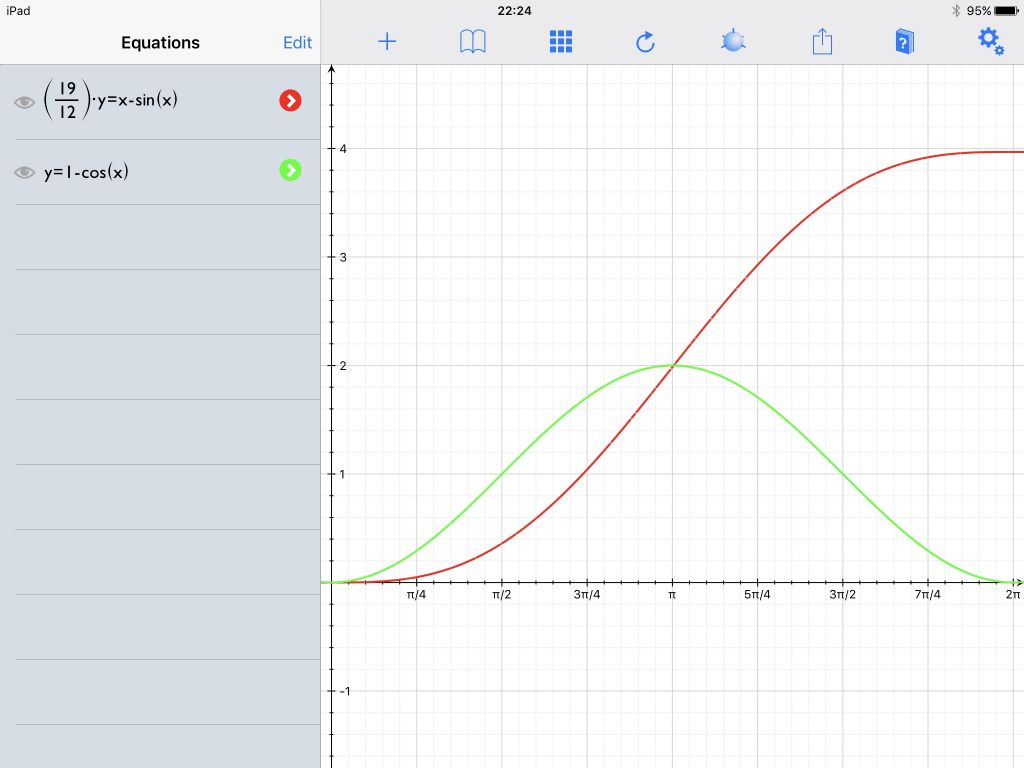Thanks for pointing out that book. The introductory comment about quartz clocks should be accompanied by a sober-sounding narrator intoning "little did they know …"
Unfortunately, it's written in that overly wordy and flowery fashion that was common in earlier times, which makes it a slog for modern readers.
So that figure 82. What are the points being made? Seems like:
(1) That the amount of energy needed purely for keeping the pendulum in motion is the same whether spread over 30 impulses or applied in one larger impulse? Seems logical.
(2) That more energy is wasted if 30 small impulses are applied vs. 1 larger one? Also seems logical in a mechanical system, but likely irrelevant in magnetically-impulsed systems.
(3) That more energy is wasted if the impulse is applied at the bottom vs. near the top of the pendulum? I have more trouble accepting this, but I could imagine that additional friction could be encountered at the bottom because a larger throw of the impulsing mechanism could be necessitated due to the larger amplitude near the bottom. But again, this supposed additional wasted energy is likely irrelevant in magnetically-impulsed systems.
As for the ideal position for impulsing, I'll stick with the center of percussion, which would be near the bottom in a pendulum with a heavy bob.
One other point made is that the mechanical impulse was designed to be applied with nearly zero force at its onset, growing to some maximum before release. I think this could be pertinent to magnetically applied forces as well, and I had imagined using an RC network or similar to avoid an abrupt application of force.
Edited By S K on 01/02/2023 16:05:22
Roger Jelbert.









